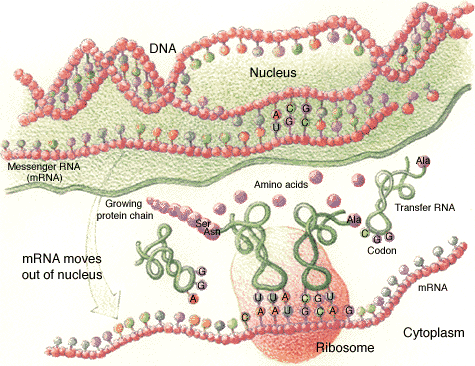4.8: ARN
- Page ID
- 108018
\( \newcommand{\vecs}[1]{\overset { \scriptstyle \rightharpoonup} {\mathbf{#1}} } \)
\( \newcommand{\vecd}[1]{\overset{-\!-\!\rightharpoonup}{\vphantom{a}\smash {#1}}} \)
\( \newcommand{\dsum}{\displaystyle\sum\limits} \)
\( \newcommand{\dint}{\displaystyle\int\limits} \)
\( \newcommand{\dlim}{\displaystyle\lim\limits} \)
\( \newcommand{\id}{\mathrm{id}}\) \( \newcommand{\Span}{\mathrm{span}}\)
( \newcommand{\kernel}{\mathrm{null}\,}\) \( \newcommand{\range}{\mathrm{range}\,}\)
\( \newcommand{\RealPart}{\mathrm{Re}}\) \( \newcommand{\ImaginaryPart}{\mathrm{Im}}\)
\( \newcommand{\Argument}{\mathrm{Arg}}\) \( \newcommand{\norm}[1]{\| #1 \|}\)
\( \newcommand{\inner}[2]{\langle #1, #2 \rangle}\)
\( \newcommand{\Span}{\mathrm{span}}\)
\( \newcommand{\id}{\mathrm{id}}\)
\( \newcommand{\Span}{\mathrm{span}}\)
\( \newcommand{\kernel}{\mathrm{null}\,}\)
\( \newcommand{\range}{\mathrm{range}\,}\)
\( \newcommand{\RealPart}{\mathrm{Re}}\)
\( \newcommand{\ImaginaryPart}{\mathrm{Im}}\)
\( \newcommand{\Argument}{\mathrm{Arg}}\)
\( \newcommand{\norm}[1]{\| #1 \|}\)
\( \newcommand{\inner}[2]{\langle #1, #2 \rangle}\)
\( \newcommand{\Span}{\mathrm{span}}\) \( \newcommand{\AA}{\unicode[.8,0]{x212B}}\)
\( \newcommand{\vectorA}[1]{\vec{#1}} % arrow\)
\( \newcommand{\vectorAt}[1]{\vec{\text{#1}}} % arrow\)
\( \newcommand{\vectorB}[1]{\overset { \scriptstyle \rightharpoonup} {\mathbf{#1}} } \)
\( \newcommand{\vectorC}[1]{\textbf{#1}} \)
\( \newcommand{\vectorD}[1]{\overrightarrow{#1}} \)
\( \newcommand{\vectorDt}[1]{\overrightarrow{\text{#1}}} \)
\( \newcommand{\vectE}[1]{\overset{-\!-\!\rightharpoonup}{\vphantom{a}\smash{\mathbf {#1}}}} \)
\( \newcommand{\vecs}[1]{\overset { \scriptstyle \rightharpoonup} {\mathbf{#1}} } \)
\( \newcommand{\vecd}[1]{\overset{-\!-\!\rightharpoonup}{\vphantom{a}\smash {#1}}} \)
\(\newcommand{\avec}{\mathbf a}\) \(\newcommand{\bvec}{\mathbf b}\) \(\newcommand{\cvec}{\mathbf c}\) \(\newcommand{\dvec}{\mathbf d}\) \(\newcommand{\dtil}{\widetilde{\mathbf d}}\) \(\newcommand{\evec}{\mathbf e}\) \(\newcommand{\fvec}{\mathbf f}\) \(\newcommand{\nvec}{\mathbf n}\) \(\newcommand{\pvec}{\mathbf p}\) \(\newcommand{\qvec}{\mathbf q}\) \(\newcommand{\svec}{\mathbf s}\) \(\newcommand{\tvec}{\mathbf t}\) \(\newcommand{\uvec}{\mathbf u}\) \(\newcommand{\vvec}{\mathbf v}\) \(\newcommand{\wvec}{\mathbf w}\) \(\newcommand{\xvec}{\mathbf x}\) \(\newcommand{\yvec}{\mathbf y}\) \(\newcommand{\zvec}{\mathbf z}\) \(\newcommand{\rvec}{\mathbf r}\) \(\newcommand{\mvec}{\mathbf m}\) \(\newcommand{\zerovec}{\mathbf 0}\) \(\newcommand{\onevec}{\mathbf 1}\) \(\newcommand{\real}{\mathbb R}\) \(\newcommand{\twovec}[2]{\left[\begin{array}{r}#1 \\ #2 \end{array}\right]}\) \(\newcommand{\ctwovec}[2]{\left[\begin{array}{c}#1 \\ #2 \end{array}\right]}\) \(\newcommand{\threevec}[3]{\left[\begin{array}{r}#1 \\ #2 \\ #3 \end{array}\right]}\) \(\newcommand{\cthreevec}[3]{\left[\begin{array}{c}#1 \\ #2 \\ #3 \end{array}\right]}\) \(\newcommand{\fourvec}[4]{\left[\begin{array}{r}#1 \\ #2 \\ #3 \\ #4 \end{array}\right]}\) \(\newcommand{\cfourvec}[4]{\left[\begin{array}{c}#1 \\ #2 \\ #3 \\ #4 \end{array}\right]}\) \(\newcommand{\fivevec}[5]{\left[\begin{array}{r}#1 \\ #2 \\ #3 \\ #4 \\ #5 \\ \end{array}\right]}\) \(\newcommand{\cfivevec}[5]{\left[\begin{array}{c}#1 \\ #2 \\ #3 \\ #4 \\ #5 \\ \end{array}\right]}\) \(\newcommand{\mattwo}[4]{\left[\begin{array}{rr}#1 \amp #2 \\ #3 \amp #4 \\ \end{array}\right]}\) \(\newcommand{\laspan}[1]{\text{Span}\{#1\}}\) \(\newcommand{\bcal}{\cal B}\) \(\newcommand{\ccal}{\cal C}\) \(\newcommand{\scal}{\cal S}\) \(\newcommand{\wcal}{\cal W}\) \(\newcommand{\ecal}{\cal E}\) \(\newcommand{\coords}[2]{\left\{#1\right\}_{#2}}\) \(\newcommand{\gray}[1]{\color{gray}{#1}}\) \(\newcommand{\lgray}[1]{\color{lightgray}{#1}}\) \(\newcommand{\rank}{\operatorname{rank}}\) \(\newcommand{\row}{\text{Row}}\) \(\newcommand{\col}{\text{Col}}\) \(\renewcommand{\row}{\text{Row}}\) \(\newcommand{\nul}{\text{Nul}}\) \(\newcommand{\var}{\text{Var}}\) \(\newcommand{\corr}{\text{corr}}\) \(\newcommand{\len}[1]{\left|#1\right|}\) \(\newcommand{\bbar}{\overline{\bvec}}\) \(\newcommand{\bhat}{\widehat{\bvec}}\) \(\newcommand{\bperp}{\bvec^\perp}\) \(\newcommand{\xhat}{\widehat{\xvec}}\) \(\newcommand{\vhat}{\widehat{\vvec}}\) \(\newcommand{\uhat}{\widehat{\uvec}}\) \(\newcommand{\what}{\widehat{\wvec}}\) \(\newcommand{\Sighat}{\widehat{\Sigma}}\) \(\newcommand{\lt}{<}\) \(\newcommand{\gt}{>}\) \(\newcommand{\amp}{&}\) \(\definecolor{fillinmathshade}{gray}{0.9}\)
¿Cómo se mueve la información del núcleo, dónde se encuentra el ADN, al citoplasma, dónde están los ribosomas?
El ARN, el otro ácido nucleico, así es como. Específicamente ARNm. RNA, el jugador medio en el dogma central. Esta imagen es una representación abstracta del ARNt. Sin ARNt, ARNm y ARNr, no se pueden producir proteínas.
RNA
El ADN por sí solo no puede “decirle” a tus células cómo hacer proteínas. Necesita la ayuda del ARN, el ácido ribonucleico, el otro actor principal en el dogma central de la biología molecular. Recuerde, el ADN “vive” en el núcleo, pero las proteínas se elaboran en los ribosomas en el citoplasma. ¿Cómo llega la información genética desde el núcleo hasta el citoplasma? El ARN es la respuesta.
ARN vs ADN
El ARN, al igual que el ADN, es un ácido nucleico. Sin embargo, el ARN difiere del ADN de varias maneras. Además de ser más pequeños que el ADN, el ARN también
- consiste en una cadena de nucleótidos en lugar de dos,
- contiene la base nitrogenada uracilo (U) en lugar de timina,
- contiene el azúcar ribosa en lugar de desoxirribosa.
Tipos de ARN
Hay tres tipos principales de ARN, todos los cuales están involucrados en la elaboración de proteínas.
- El ARN mensajero (ARNm) copia las instrucciones genéticas del ADN en el núcleo, y las lleva al citoplasma.
- El ARN ribosómico (ARNr) ayuda a formar ribosomas, el orgánulo donde se ensamblan las proteínas.
- El ARN de transferencia (ARNt) lleva los aminoácidos a los ribosomas, donde se unen para formar proteínas.
 Se muestran los tres tipos de ARN y sus papeles: (1) el ARNm contiene el mensaje genético, (2) el ARNt transfiere los aminoácidos al ribosoma, (3) el ARNr es el componente principal del ribosoma. Se discutirá más sobre los roles de los ARN en conceptos adicionales.
Se muestran los tres tipos de ARN y sus papeles: (1) el ARNm contiene el mensaje genético, (2) el ARNt transfiere los aminoácidos al ribosoma, (3) el ARNr es el componente principal del ribosoma. Se discutirá más sobre los roles de los ARN en conceptos adicionales. Resumen
- El ARN difiere del ADN de varias maneras.
- Hay tres tipos principales de ARN: ARN mensajero (ARNm), ARN ribosómico (ARNr) y ARN de transferencia (ARNt).
- Cada tipo juega un papel diferente en la fabricación de proteínas.
Revisar
- ¿Cuáles son los tres tipos principales de ARN? Describir sus roles.
- Comparar y contrastar ADN y ARN.
| Imagen | Referencia | Atribuciones |
 |
[Figura 1] | Crédito: Marilee Bailey, cortesía del Departamento de Energía de Estados Unidos; Derechos de autor de la imagen ermess, 2014; Kosi Gramatikoff (Usuario:Kosigrim); Kyle Schneider Fuente: http://web.ornl.gov/sci/techresources/Human_Genome/publicat/tko/index.shtml; http://www.shutterstock.com; commons.wikimedia.org/wiki/Archivo:Sirnavitro.gif; commons.wikimedia.org/wiki/Archivo:trna_all2.png Licencia: Dominio público |
 |
[Figura 2] | Crédito: Marilee Bailey, cortesía del Departamento de Energía de Estados Unidos; Mariana Ruiz Villarreal (LadyOFHats) para Fundación CK-12; Derechos de autor de la imagen ermess, 2014 Fuente: http://web.ornl.gov/sci/techresources/Human_Genome/publicat/tko/index.shtml; CK-12 Fundación; http://www.shutterstock.com Licencia: Dominio público; CC BY-NC 3.0 |

